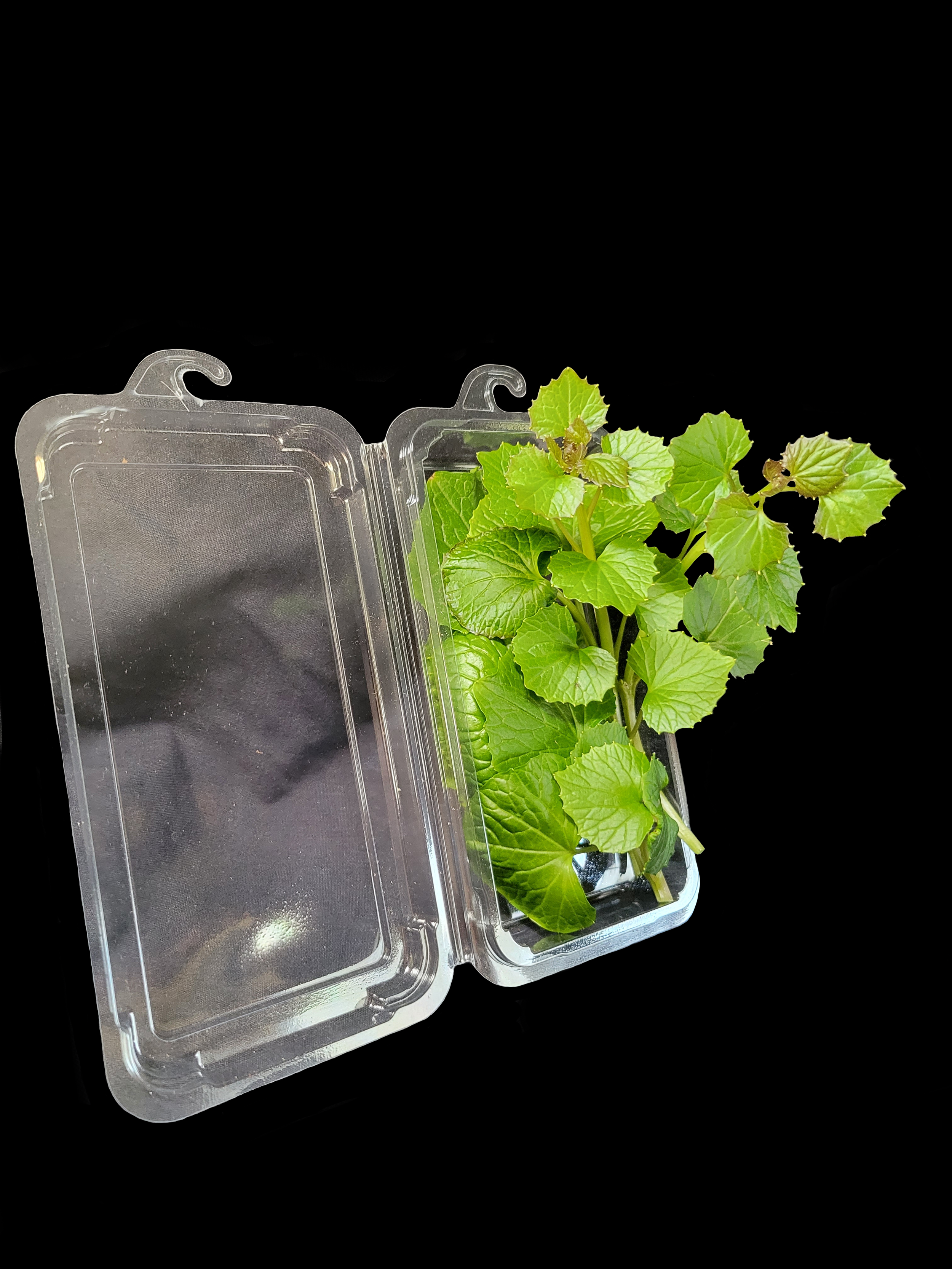WASABI
FLAVOR: Refreshing, clean & light, fleeting ‘heat of the sinuses’ followed by more persistent sweet herbal notes
Most Americans have never tasted true wasabi- most often, the green paste served on your plate is a pseudo-wasabi paste made from mustard or horseradish. REAL WASABI IS NOT LIKE THE FAKE GREEN PASTE. Comparatively, real wasabi is much lighter in its level of ‘heat’, complimenting sushi and other dishes whereas the fake paste overpowers them. Real wasabi is so much more complex and refreshing in flavor- truly you must experience the difference for yourself. After all, wasabi is a member of the mustard family Brassicaceae, so it should come as no surprise that wasabi does still have a potent, horseradish-like kick of heat. All parts of the wasabi plant are edible, but the main two parts we eat are the stem and the leaves.
USES: Stir-fried, pickled, used as wraps, grated, & more
The leaves are quite tame in comparison to the stem, and are the perfect addition to dishes where a lighter version is desired. They can be sautéed in oil, stir fried into dishes, pickled, or used as a plating accessory or wrap for sushi.
The stem of the wasabi is the ‘hottest’ part, so it is not typically eaten alone. The best way to enjoy it is as an element of sushi, is to very finely grate a small section of it onto the sushi meat before it is rolled and closed. You may also opt to make a paste of it and dipping it instead.
Finally, it must be noted- wasabi is considered one of, if not THE most difficult crop to grow commercially. It is an extremely particular plant, demanding stable cool air temperatures, heavy shade, constant access to water, and is very susceptible to fungal diseases. As such, the majority of commercially grown wasabi comes from the small region in Japan where it is native. Here at TR, we are absolutely delighted to be able to offer fresh, locally grown wasabi leaves and rhizomes- the flavor of fresh wasabi is not afforded to many outside of Japan.
